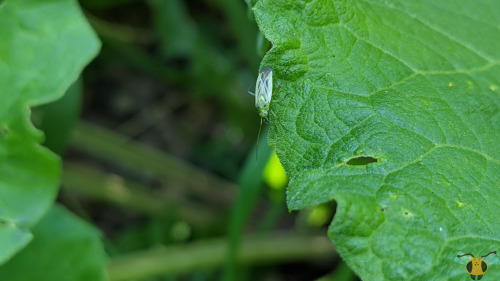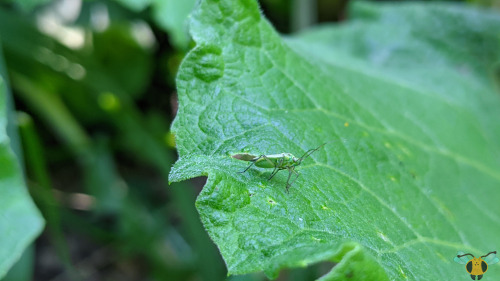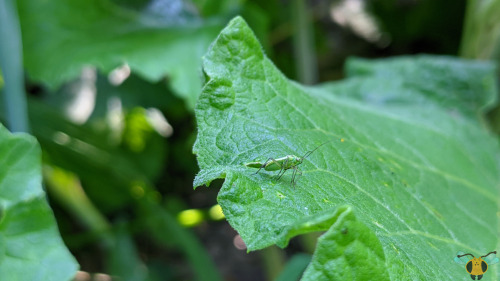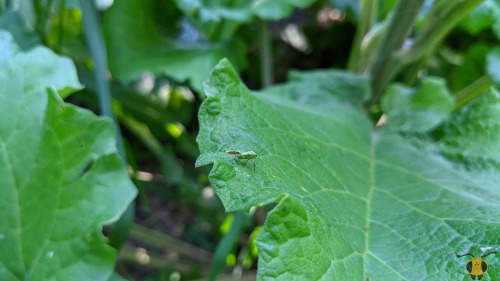Two-Spotted Grass Bug - Stenotus binotatusA green area filled with green grass, green leaves, and a
Two-Spotted Grass Bug - Stenotus binotatusA green area filled with green grass, green leaves, and a certain green insect skitting around in this green world. With a bright green body, this specimen could have a much easier time hiding in your garden or the meadows that it calls home. You’d probably be better off searching for it in the meadow as there’s plenty of tall grasses for it to stick its rostrum into and enjoy. Yes, the Two-Spotted Grass Bug does in fact feed on grasses, but not the blades of grass that are seemingly more appetizing. Leaving the blades for the Grasshoppers to munch, this verdant Plant Bug uses its mouthparts to take nutrients from the clustering flowers of grass. As well, it isn’t too picky about the grass flowers it chooses to feed on whether a nymph or a full grown adult (like this specimen). The major difference is how to get to and from the food it needs since the nymphs lack wings. While known for feeding on grasses, they don’t seem to be generalists as they’ve been found feed on tree flowers too. With zebra grass growing in our neighborhood, I wonder if they have taken to that? While named after the spots on their thorax plate, you could be forgiven for missing them by looking at the stripes that run down their wings. They certainly are lovely, but you have to look for those spot markings too. With look-a-like insect such as the Alfalfa Plant Bug and Ilnacora malina, it’s helpful to be sure which insects are flying around the meadow. With respect to the latter which is a dark green with a darker head, the Two-Spotted Grass Bug tends to be a paler green color with green on the top of its head. Although sometimes you may find a yellow-colored Grass Bug! What’s this! It seems that male S. binotatus tend to fall more on the yellow side while females tend to have that pale green color! Also, while I’m not totally sure, it seems that males have more their spots become gradually more prominent as they age, practically connecting with the markings on their back into one long line. I’ll need to find and review more specimens to be sure, and find more in person too! As with every insect I photograph, if I can find more, you’ll find them here, and I do sincerely hope that you enjoy them!Pictures were taken on June 16, 2021 with a Google Pixel 4. -- source link
Tumblr Blog : jonnysinsectcatalogue.tumblr.com
#ontario insect#plant bug#true bug#hemiptera#heteroptera#insect#toronto#june2021







